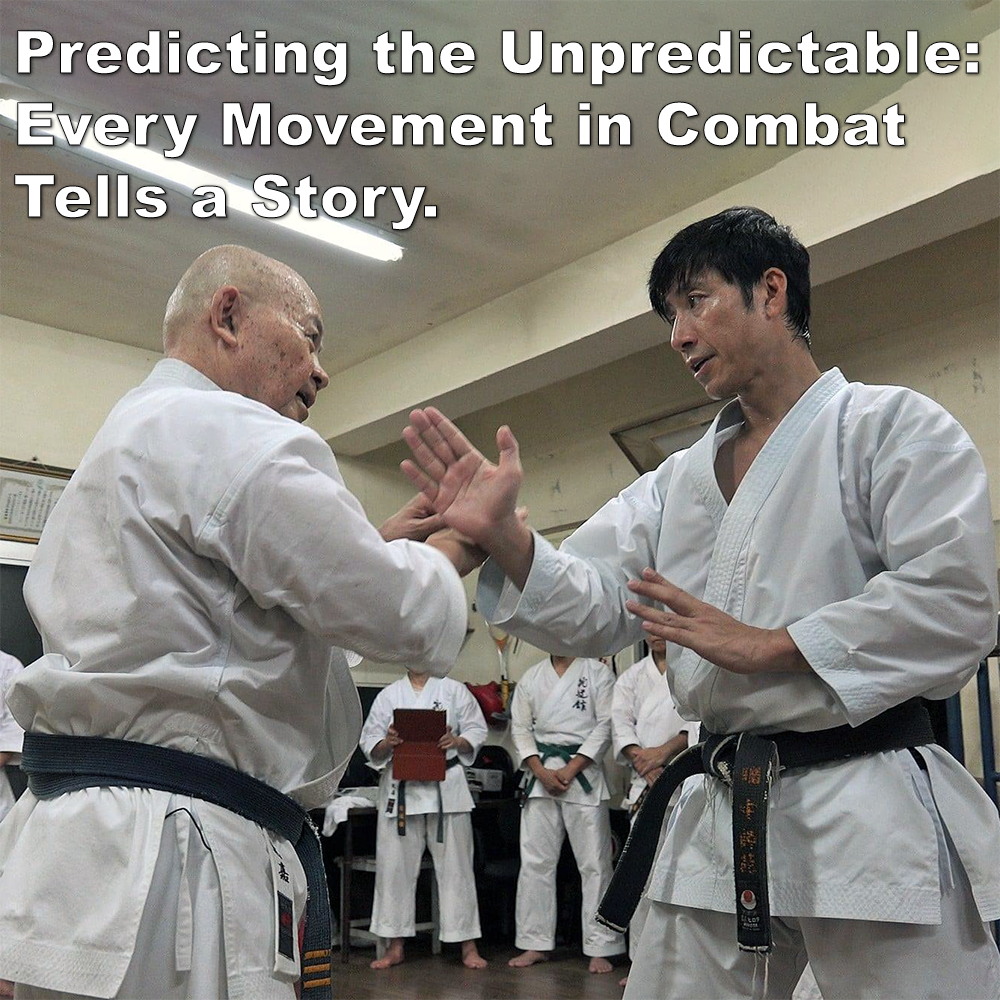
Predicting the Unpredictable: Every Movement in Combat Tells a Story.
Posted by ADAM CARTER on NOV 19, 2024

Predicting the Unpredictable: Every Movement in Combat Tells a Story.
(Approx 1 minute 40 second read)
Imagine the massive advantage you’d have if you knew what your opponent was going to do before it happened. It would allow you to react instantaneously, adapting to their moves with precision.
A person’s unconscious, instant reaction to a stimulus is known as a reflex. If you touched a hot stove you would instantly withdraw your hand – no thinking, no hesitation, just action. A similar principle can be applied in combat through what is called “predictable responses”.
A “predictable response” refers to the unconscious actions an opponent takes when subjected to certain stimuli. While every fight is unpredictable, there are two primary categories of predictable responses we could exploit: physiological and trained.
A physiological response is a hardwired biological reaction – flinching, pulling away from pain, or closing the eyes when something comes close to the face. These reflexes happen automatically and can be used to your advantage. For example, if you land a hard strike to the ribs, your opponent may instinctively shield the area, giving you the chance to exploit an opening.
Trained responses are ingrained reactions formed through repetitive practice. For example, you will react to an incoming attack based on what you’ve drilled countless times. By understanding how certain techniques trigger specific reactions, you can guide your opponent into a response you’ve already anticipated, making it easier to counter or exploit.
It’s important to note that real fights are not choreographed of course, like they are in the dojo. While you can anticipate certain reactions, combat is inherently unpredictable. One flaw in many martial arts demonstrations is that they rely heavily on cooperative partners. From time to time, it’s good practice to train with an uncooperative opponent where attacks are not known.
However, despite the chaos, predictable responses – especially instinctive, physiological ones – still offer an edge. For example, no matter how uncooperative an opponent is, they’ll naturally try to protect themselves from pain.
Practicing to recognize and exploit predictable responses can give you a significant advantage, but it’s not a guarantee of success. The key lies in being prepared for the unexpected while still leveraging the predictable.
In the end, combat is fluid. So, while predictable responses provide a strategic foundation, the real art lies in balancing preparation with the unpredictability of real-world encounters.
True proficiency is found in your ability to adapt, staying one step ahead even when things don’t go as planned.
Written by Adam Carter – Shuri Dojo
![]() Photo Credit: Minoru Higa and Tatsuya Naka practicing ‘Kakie’.
Photo Credit: Minoru Higa and Tatsuya Naka practicing ‘Kakie’.
